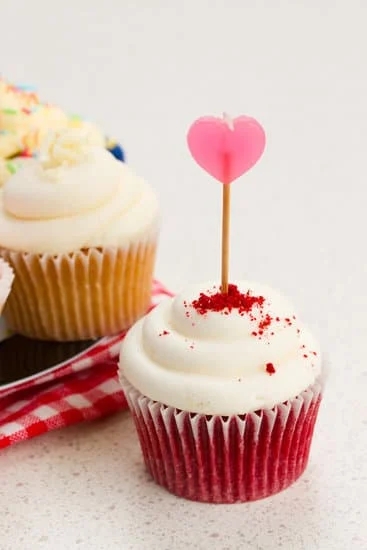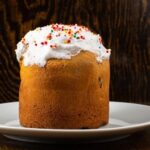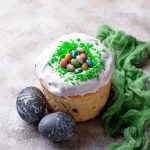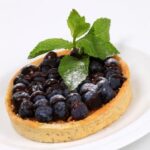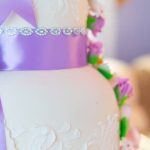Edible flowers have become a popular and stunning trend in the world of cake decorating, adding a touch of natural beauty and elegance to any sweet creation. In this article, we will delve into the art of incorporating edible flowers into your cake designs with a focus on how to make them yourself.
Discover the colorful and creative possibilities of using edible flowers for cake decorating, as we guide you through the process of preparing, preserving, and showcasing these delicate blooms on your cakes.
When it comes to creating visually appealing and unique cakes, edible flowers offer a plethora of benefits that go beyond just aesthetics. Not only do they elevate the overall presentation of your cakes, but they also add a delightful floral fragrance and an extra layer of flavor to your creations.
Whether you’re looking to create a whimsical garden-themed cake or simply want to add a pop of color to your dessert table, edible flowers are sure to impress your guests and leave them in awe of your baking skills.
From delicate lavender petals to vibrant hibiscus blooms, there is a wide variety of edible flowers that are safe for cake decorating. In the following sections, we will explore different types of edible flowers that are not only visually appealing but also taste delicious when used as decorations on cakes. Get ready to embark on a journey into the world of edible flowers and unlock the secrets to creating show-stopping cakes that are as beautiful as they are delectable.
Benefits of Using Edible Flowers in Cake Decorating
Edible flowers are not only visually stunning additions to cake decorating, but they also offer a range of benefits that can elevate your sweet creations to the next level. One of the most significant advantages of using edible flowers in cake decorating is their ability to add a touch of natural beauty and sophistication to any design. Whether you opt for vibrant and colorful blossoms or delicate petals, edible flowers can transform a simple cake into a work of art.
In addition to their aesthetic appeal, edible flowers can also infuse your cakes with unique flavors and aromas. For example, lavender flowers can lend a subtle floral scent to your creations, while rose petals can impart a romantic and fragrant essence. By strategically incorporating edible flowers into your cake designs, you can create multi-sensory experiences that will delight both the eyes and the taste buds of those enjoying your confections.
When considering how to make edible flowers for cake decorating, it is essential to choose varieties that are safe for consumption. Some common examples of edible flowers that are suitable for decorating cakes include roses, violets, pansies, calendula, and chamomile. It is crucial to source organic, pesticide-free blooms from reputable suppliers or home gardens to ensure that they are safe for consumption and free from harmful chemicals.
| Benefits | Examples |
|---|---|
| Enhance visual appeal | Vibrant colors and delicate petals |
| Add unique flavors | Lavender for floral scent, rose petals for romance |
Types of Edible Flowers That Are Safe for Cake Decorating
When it comes to incorporating edible flowers into cake decorating, it is crucial to ensure that the flowers being used are safe for consumption. Not all flowers are suitable for decorating cakes, as some may be toxic if ingested. To help you choose the right edible flowers for your cake projects, here is a list of some common types of edible flowers that are considered safe for cake decorating:
- Roses: Roses are not only beautiful but also edible, making them a popular choice for cake decorators. Make sure to remove the white bitter portion at the base of each petal before using on a cake.
- Violets: These delicate flowers come in various colors and add a subtle floral touch to cakes. Be sure to use only the petals and avoid any green parts or stems.
- Lavender: Lavender lends a fragrant and slightly sweet flavor to cakes. Use sparingly as the flavor can be quite strong.
- Calendula: Also known as marigolds, calendula flowers have a mild peppery taste and vibrant color, making them perfect for decorating cakes.
Incorporating these edible flowers into your cake designs can add a stunning visual element and unique flavor profile. However, it is important to source these flowers from reputable sources or grow them yourself using organic methods to ensure they are free from pesticides and other harmful chemicals.
How to Make Edible Flowers for Cake Decorating
If you want to take your cake decorating skills up a notch, consider creating your own edible flowers at home. Making edible flowers for cake decorating is easier than you may think and allows you to customize your decorations according to your preferences. Here is a basic guide on how to make edible flowers for cake decorating:
- Choose edible flower petals such as roses, violets, or pansies that are free from pesticides.
- Brush each petal with egg white wash (1 egg white mixed with 1 teaspoon of water) to give them a glossy finish and help them stick together.
- Dust each petal with superfine sugar or dip in melted chocolate before assembling into flower shapes.
By making your own edible flowers, you can elevate your cakes with unique and personalized decorations while ensuring their safety and quality. Experiment with different flower types and techniques to create stunning floral arrangements on your cakes that will impress both visually and gastronomically.
Step-by-Step Guide on How to Properly Prepare Edible Flowers for Decorating Cakes
Decorating cakes with edible flowers can add a touch of elegance and natural beauty to any dessert. However, it is essential to properly prepare the flowers to ensure they are safe for consumption and visually appealing on your cake. Here is a step-by-step guide on how to prepare edible flowers for decorating cakes:
1. Choose the Right Flowers: Not all flowers are safe for consumption, so it’s crucial to select edible varieties that have not been treated with chemicals or pesticides. Some popular options include roses, pansies, violets, lavender, and marigolds. Make sure to source your flowers from reputable suppliers or grow them in your pesticide-free garden.
2. Cleaning the Flowers: Before using the flowers for decorating, gently rinse them under cold water to remove any dirt or insects. You can also use a soft brush to clean delicate petals. Be careful not to soak the flowers as excessive moisture can cause them to lose their shape.
3. Removing Inedible Parts: Once the flowers are clean, carefully remove any inedible parts such as stems, stamens, pistils, and sepals. These parts can have a bitter taste or may not be visually appealing on your cake. Trim the flowers while leaving enough of the petals intact for decoration.
4. Drying the Flowers: To ensure that the edible flowers retain their shape and color on the cake, allow them to air dry completely before placing them on your dessert. You can lay them on a paper towel or drying rack in a well-ventilated area away from direct sunlight. Once they are dried, store them in an airtight container until you are ready to use them.
By following these steps on how to make edible flowers for cake decorating, you can elevate your dessert creations with stunning floral designs that are both safe and visually striking. Whether you choose to press them between wax paper for preservation or delicately place them atop frosting blooms – incorporating edible flowers into your cake decorating repertoire will surely impress guests and add a unique touch to any occasion.
Various Techniques for Incorporating Edible Flowers Into Cake Designs
Edible flowers add a touch of elegance and beauty to any cake design, making them a popular choice for decorating special occasion cakes. There are various techniques you can use to incorporate these delicate blooms into your cake designs, each adding a unique flair to your creations.
One simple yet effective technique for incorporating edible flowers into cake designs is by placing whole blooms strategically on the cake’s surface. You can choose flowers that complement the color scheme of the cake or add a pop of contrasting color for visual interest. Make sure to clean and prepare the flowers properly before placing them on the cake to ensure they are safe for consumption.
Another creative way to use edible flowers in cake decorating is by pressing them and creating floral decorations. Pressed flowers maintain their vibrant colors and delicate shapes, making them perfect for adding a whimsical touch to your cakes. To press flowers, place them between layers of absorbent paper and apply gentle pressure until they dry out. Once pressed, you can arrange them on the cake’s surface in various patterns and designs.
For those looking to take their edible flower cake decorating skills up a notch, consider infusing flower petals into frosting or fondant for a subtle floral flavor and aroma. You can create floral-infused syrups or extracts to add to your frosting recipes, giving your cakes a unique taste that pairs beautifully with the visual appeal of the edible flowers.
| Technique | Description |
|---|---|
| Placing Whole Blooms | Strategically places whole blooms on the cake’s surface for visual impact |
| Pressing Flowers | Create pressed floral decorations by drying out petals between absorbent paper |
| Infusing Petals into Frosting | Add floral flavor by infusing flower petals into frosting or fondant |
Tips for Storing and Preserving Edible Flowers for Future Cake Decorating Projects
Proper Storage Techniques
When it comes to storing edible flowers for future cake decorating projects, it is essential to follow some guidelines to ensure they remain fresh and vibrant. The best way to store edible flowers is by placing them in a container lined with a damp paper towel.
Make sure the flowers are not overcrowded in the container, as this can cause them to wilt faster. Keep the flowers in the refrigerator, preferably in the crisper drawer, where they will stay cool and retain their freshness.
Drying Edible Flowers
Another method for preserving edible flowers for cake decorating is by drying them. Drying flowers helps extend their shelf life and allows you to use them even when they are out of season. To dry edible flowers, you can hang them upside down in a dark, dry place with good air circulation. You can also use a dehydrator on a low setting to speed up the process. Once dried, store the flowers in an airtight container away from sunlight.
Freezing Edible Flowers
Freezing edible flowers is another effective way to preserve them for future cake decorating projects. To freeze edible flowers, gently wash and pat them dry before placing them in an airtight container or freezer bag. Be sure to label the container with the date for reference. When ready to use frozen edible flowers, simply thaw them out in the refrigerator and gently dab off any excess moisture before decorating your cakes.
By following these tips for storing and preserving edible flowers, you can enjoy using these natural beauties in your cake decorating projects year-round. Whether you choose to refrigerate, dry, or freeze your edible flowers, proper storage techniques will help maintain their color and shape for when you’re ready to create stunning floral designs on your cakes.
Creative Ways to Arrange Edible Flowers on Cakes for Different Occasions
Weddings
For weddings, edible flowers can add a touch of elegance and sophistication to the cake design. One creative way to arrange edible flowers on wedding cakes is to create cascading floral arrangements down the tiers of the cake. You can use a variety of edible blooms such as roses, lavender, and pansies to create a stunning visual effect. Another idea is to press edible flowers between layers of the cake for a subtle yet beautiful detail.
Baby Showers
When it comes to baby showers, delicate and pastel-colored edible flowers are perfect for adding a whimsical touch to the cake. Consider using edible blooms like violets, chamomile, and daisies to create a sweet and charming look. One fun arrangement idea is to create a floral wreath around the top tier of the cake or scatter small edible flowers on each slice for a cute presentation.
Birthday Celebrations
For birthday cakes, bright and vibrant edible flowers can bring a pop of color and cheerfulness to the design. Sunflowers, marigolds, and nasturtiums are great choices for creating bold floral arrangements on birthday cakes. You can also use edible flower petals to decorate the sides of the cake or create floral patterns on top. Personalize the cake by incorporating the birthday person’s favorite flowers into the design for an extra special touch.
By exploring different creative ways to arrange edible flowers on cakes for various occasions, you can elevate your cake decorating skills and create visually stunning creations that impress your guests. Embrace the natural beauty of edible blooms in your designs and let your creativity flow when incorporating them into your cake decorating projects. Experiment with different arrangements, colors, and types of edible flowers to find unique ways to make your cakes stand out at any event.
Safety Precautions and Considerations When Using Edible Flowers for Cake Decorating
When using edible flowers for cake decorating, it is essential to prioritize safety precautions and considerations to ensure that the final product not only looks beautiful but is also safe for consumption. One of the first steps when working with edible flowers is to make sure that they are indeed edible and not contaminated with chemicals or pesticides. It is recommended to source your edible flowers from reputable suppliers who specialize in providing flowers specifically meant for culinary use.
Before incorporating any edible flower into your cake design, it is important to thoroughly clean them. Gently rinse the flowers under cold water to remove any dirt or debris that may be present. Additionally, look out for bugs or insects that might have taken up residence within the petals. Once cleaned, place the flowers on paper towels and allow them to air dry completely before using them in your cake decorating.
Another crucial consideration when using edible flowers for cake decorating is ensuring that they are free from any potential allergens. Some individuals may have allergies or sensitivities to certain types of flowers, so it is important to communicate clearly with clients or guests about the ingredients used in your cake decorations.
Always keep records of the specific types of flowers used in each design to address any allergen concerns that may arise. By taking these safety precautions and considerations into account, you can confidently create stunning cakes adorned with beautiful and safe-to-eat edible flowers.
Conclusion
In conclusion, learning how to make edible flowers for cake decorating is a delightful skill that can elevate your baked creations to new heights. The natural beauty and versatility of edible flowers not only add a visually appealing touch to cakes but also offer a unique flavor profile that can enhance the overall taste experience. By incorporating these blooms into your cake decorating repertoire, you can create stunning masterpieces that are sure to impress your family, friends, or clients.
As you embark on your journey of using edible flowers in cake decorating, it is essential to consider the benefits and types of flowers that are safe for consumption. Following a step-by-step guide on properly preparing these blooms will ensure that they are free from any contaminants and safe to adorn your cakes. Additionally, exploring various techniques for incorporating edible flowers into your designs will allow you to unleash your creativity and experiment with different styles and arrangements.
To further enhance your skills in working with edible flowers, remember to store and preserve them correctly for future projects. By understanding how to care for these delicate blossoms, you can prolong their freshness and maintain their vibrant colors.
With safety precautions in mind and creative ways of arranging edible flowers on cakes for different occasions, you can confidently showcase the natural beauty of these blooms in your cake decorating endeavors. Embrace the artistry of edible flowers and let their enchanting allure transform your cakes into works of art that not only look exquisite but taste delightful as well.
Frequently Asked Questions
How Do You Make Edible Flowers for Cakes?
Edible flowers for cakes can be made by using fresh, pesticide-free flowers that are safe for consumption. Start by gently washing the flowers to remove any dirt or chemicals. Then, dry them thoroughly before using as cake decorations.
How Do You Make Flowers Food Safe for a Cake?
Making flowers food safe for a cake involves ensuring that the flowers you use are edible and free from harmful chemicals. It’s important to source organic or pesticide-free flowers, and to wash them well before placing them on the cake. Some flowers may need to have their stems removed to prevent contamination.
What Are the Best Edible Flowers for Cakes?
The best edible flowers for cakes are those that are not only visually appealing but also safe for consumption. Popular choices include roses, violets, pansies, lavender, calendula, and chamomile.
It’s essential to choose flowers that have not been treated with pesticides and have not been exposed to harmful chemicals. These flowers can add a beautiful touch to cakes while also being safe to eat.

Welcome to our cake decorating blog! My name is Destiny Flores, and I am the proud owner of a cake decorating business named Cake Karma. Our mission is to provide delicious, beautiful cakes for all occasions. We specialize in creating custom cakes that are tailored specifically to each customer’s individual needs and tastes.

